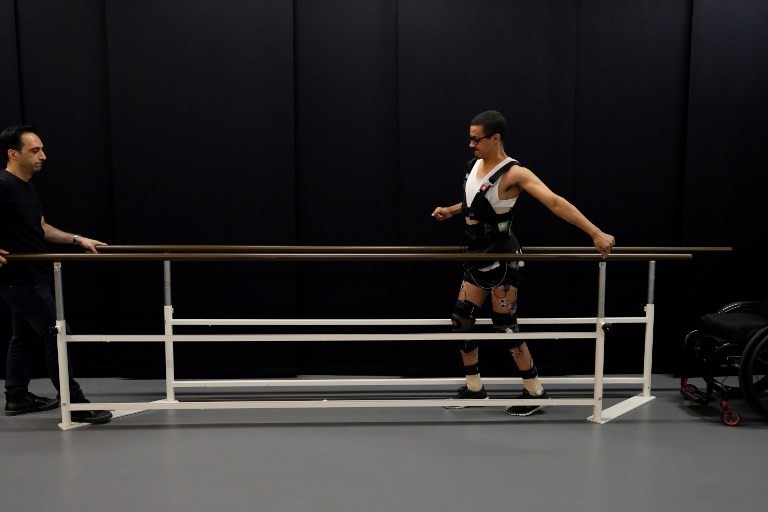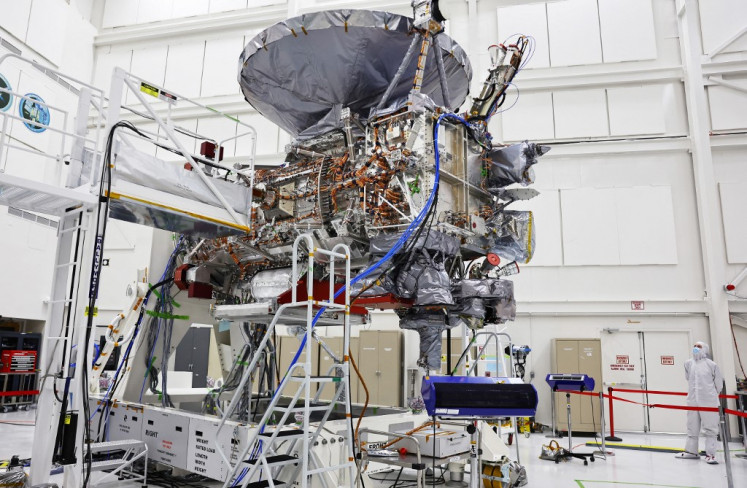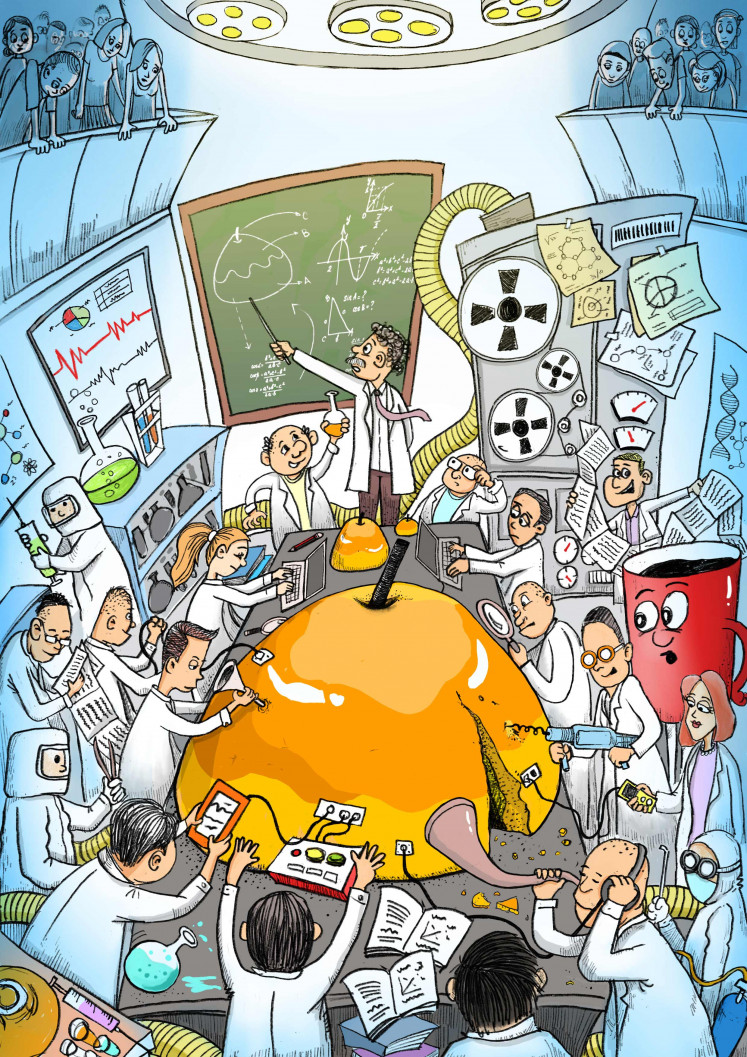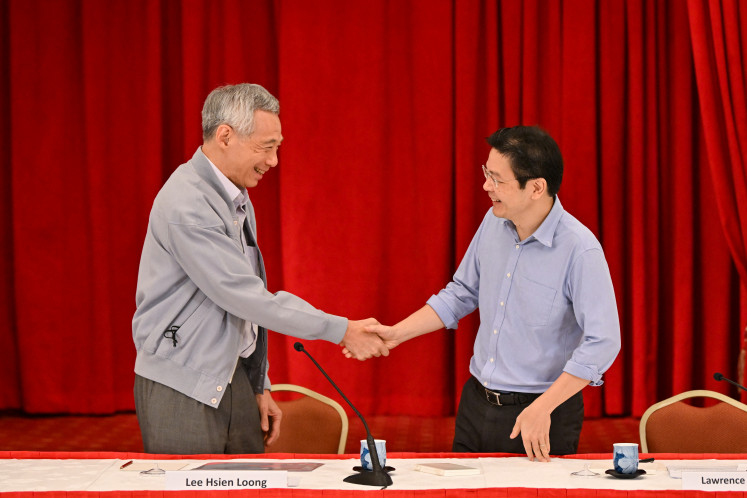Breakthrough treatment helps paralyzed patients walk
Change Size
 This handout photo released on October 31, 2018 by the Federal Polytechnique School of Lausanne (EPFL)/ The Lausanne University Hospital (CHUV) shows David Mzee, who suffered full paralysis of his left leg after an accident in 2010, at the Lausanne University Hospital in Spring 2018. (EPFL/AFP/-)
This handout photo released on October 31, 2018 by the Federal Polytechnique School of Lausanne (EPFL)/ The Lausanne University Hospital (CHUV) shows David Mzee, who suffered full paralysis of his left leg after an accident in 2010, at the Lausanne University Hospital in Spring 2018. (EPFL/AFP/-)
A
breakthrough treatment involving electrical stimulation of the spine has enabled paralyzed patients to walk again, apparently reactivating nerve connections and providing hope for people even years after accidents.
A team including neurosurgeons and engineers used targeted electrical pulses to achieve the results, triggering individual muscles in a sequence, the way the brain would.
The pulses are produced by an implant placed over the spine in careful alignment with areas that control the muscles in the lower body.
And so far, the results are promising.
"This clinical trial has given me hope," said Gert-Jan Oskam, 35, who was told he would never walk again after a traffic accident in 2011.
After five months of treatment, he can now walk short distances even without the help of electrical stimulation.
It's the culmination of "more than a decade of careful research," Gregoire Courtine, a neuroscientist at the Swiss Federal Institute of Technology who helped lead the research, told AFP.
Previous trials have used so-called continuous electrical stimulation of the spine, which worked well in rats, but produced less impressive results in humans.
After several months of training with the targeted pulses however, "our three participants were able to activate their previously paralyzed muscles without electrical stimulation," said Courtine.
"The result was completely unexpected," he added, in a video released with the publication of the research in the journal Nature Thursday.
"They could even take a few steps overground without any support, hands-free. For me seeing this recovery was amazing."
Read also: Brawijaya's smart wheelchair on the roll
- Reconnecting nerve pathways -
Footage from the study shows clearly the way the targeted stimulation differs from the continuous pulses.
With the targeted stimulation, a patient walks in an almost ordinary fashion, his feet rolling down and up as he steps.
The continuous stimulation, by contrast, produces jerkier movement, with his feet dragging and unbalancing him.
And the targeted pulsing, combined with a program of extensive physiotherapy, was apparently able to reactivate nerve connections that became dormant when patients were injured.
David Mzee, 28, suffered full paralysis of his left leg after an accident in 2010, but after the five-month program, he can walk for up to two hours with a walker using electrical stimulation, or take steps over shorter distances by himself.
The stimulation begins with a pulse directed at a muscle to prompt the patient to begin movement, for example a step.
Sensors at the feet detect the movement as the initial phase of a step and send additional targeted pulses to trigger the muscle movements required to complete the step, and repeat it.
At the same time, patients think about moving those muscles and stepping.
Because the neurons in the brain fire at almost the exact same time as the electrical pulses stimulate the muscles, the technique appears to eventually "reconnect" the brain and the muscles.
Patients can then command the muscle movement even without the electrical triggers.
Read also: Study: Brain implant lets paralyzed man regain use of hand
- 'A lot of work to do' -
"It was incredible to see all these patients moving their legs without electrical stimulation," said Jocelyne Bloch, a neurosurgeon at the University Hospital of Lausanne, who helped lead the study.
In an independent evaluation, Chet Moritz, an associate professor at the University of Washington's rehabilitation medicine department, praised the work.
"The field of spinal cord injury is poised to take a giant leap forward in the treatment of what was until very recently considered incurable paralysis," he wrote.
Courtine warned however that it remained "very important to calibrate expectations," pointing out that all three patients still rely mostly on their wheelchairs.
The study also focused only on patients who had retained some feeling in their lower body.
Going forward, Courtine said he hoped to see the technique combined with biological treatments involving nerve repair.
He and Bloch have founded a start-up that will refine the treatment and test it on people shortly after spinal cord injuries, when the technique is likely to be more successful.
"There is still a lot of work to do to change the lives of these people," Courtine said.









